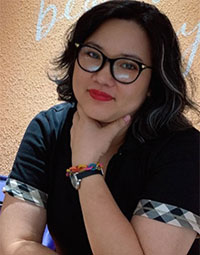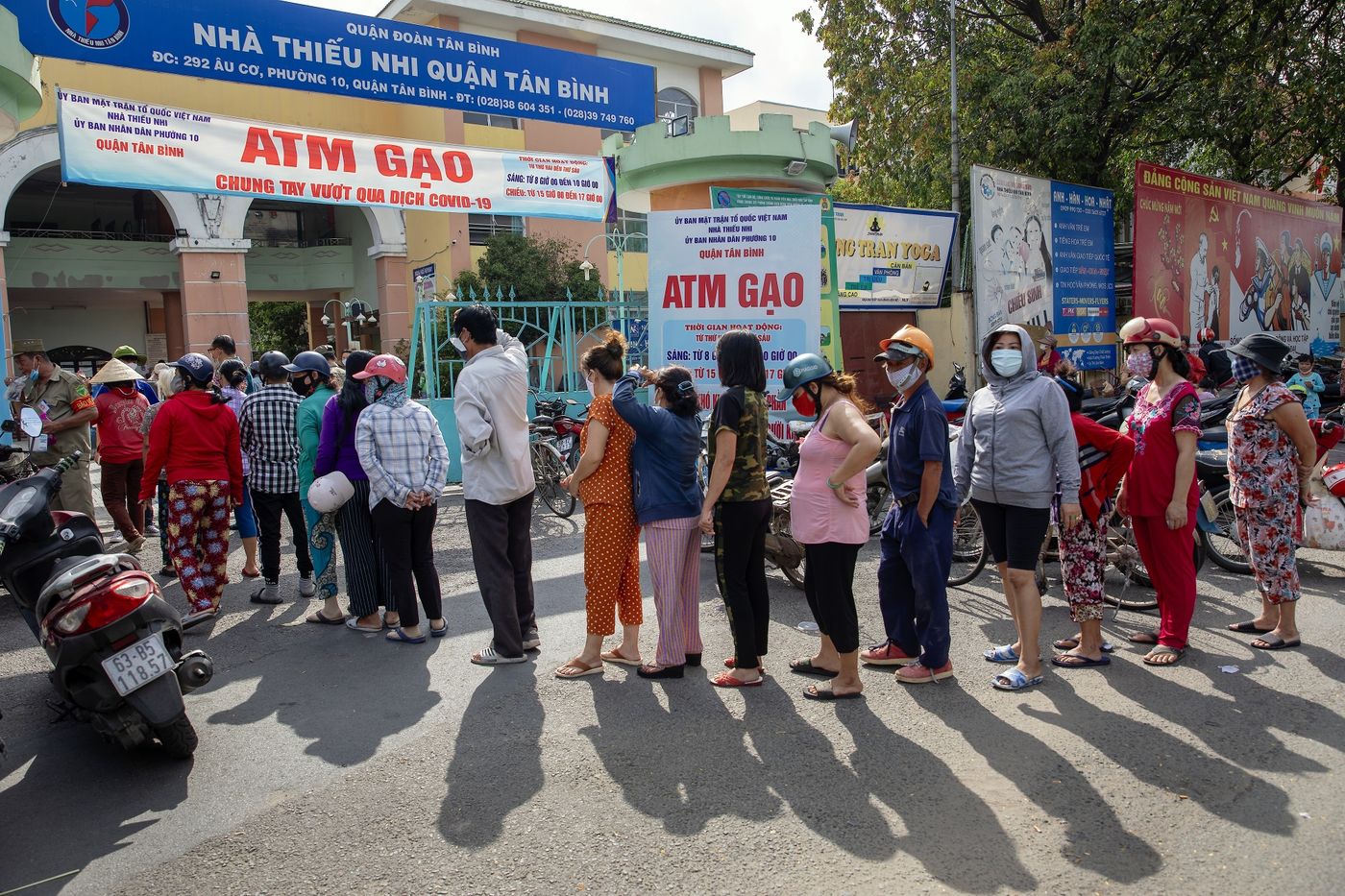 Food And Rights Talk is a series of interviews with PAN Asia Pacific (PANAP) partners across the globe to find out the situation of rural peoples, in relation to food security and human rights, amid the COVID-19 pandemic.
Food And Rights Talk is a series of interviews with PAN Asia Pacific (PANAP) partners across the globe to find out the situation of rural peoples, in relation to food security and human rights, amid the COVID-19 pandemic.
We interview Phuong Hai, project staff of Research Centre for Gender, Family and Environment in Development (CGFED), an NGO based in Hanoi, Vietnam. CGFED acts for gender equality based on freedom, diversity and human rights. Protection of women and children rights, especially the right to a free-toxic environment, is one of CGFED’s strategic actions.
PANAP: How are the Vietnamese people generally coping with the pandemic?
Hai: Right now the government is loosening up some social distancing requirements. People are allowed to travel but we still have to obey health care checks and requirements. Some of the essential stores have been reopened on April 23 because Vietnam has recorded no new cases within 6 recent days. This week, we have no new cases and things seem to be better now. We are reaching nearer and nearer our regular daily life. Next month, schools will open for children after a few months of being closed.
PANAP: How has the pandemic affected farmers in Vietnam?
Hai: COVID-19 has remarkably affected people involved in agriculture, forestry and fisheries production. Farmers have difficulty in finding consumers for produce due to export restrictions and social distancing requirements. The most clearly and directly affected are the farmers who produce fresh vegetables, fruit and aquatic products, which are difficult to preserve in the long-term. Especially in the lockdown areas, production has been heavily affected because farming activity is suspended. People are required to stay at home and are just allowed to do some gardening work inside their own areas.
But the government has promised compensation support for farmers who have been heavily affected. So that’s the reason why farmers…maybe at first they were not so happy with the government’s decision [on lockdown]. But when the new cases rapidly increased in the middle of March, they feel it’s better for them to follow directions to stay at home in order to reduce the risk of community spread. In Vietnam, people fully understand that the health care system cannot afford to treat too many infected people, that a community spread might be disastrous for the Vietnamese people. That’s the reason why even if their incomes are heavily affected, there is consensus that it’s the right thing to do.

PANAP: Does lockdown cover the entire country?
Hai: No, lockdown is enforced in just small areas with a high number of new infected cases. In Hanoi City, only one street has been locked down for 14 days since early March. And it’s not the entire street but a certain portion of it, covering only 66 households. Or, in another district, there’s only this one village that is on lockdown, not the entire district.
In areas that are not in lockdown, farmers are free to engage in agricultural production. They are allowed to do daily work in the fields, but they have to follow health requirements like wearing of face masks, and keeping at least 2 meters distance from other people, and no gathering of more than 2 persons. We are still allowed to go to the markets/supermarkets but with the same requirements, especially body temperature check. Government is also encouraging people to move to online purchasing instead, but people who are not used to it are still allowed to go to the markets/supermarkets.
PANAP: So the government is able to trace where the cases are and be selective about the areas they put on lockdown?
Hai: Yes. It is quite different in Vietnam because we have gained enough experience from the SARS epidemic more than 10 years ago. So the public health care system from the central to commune level is quite prepared. Government has launched TV ads, a website, and a smartphone app, which provides the necessary information and directions. If you suspect that you might be infected, you can call the hotline and you will be guided to which hospital you can take the test or they can send a medical team to your home to administer the test for free. Then they quarantine the infected people and do contact tracing—all contacts of the infected person are also placed under quarantine. Cases are quickly identified and isolated, and that is why the government is confident that it’s not necessary to quarantine the entire province or country.
PANAP: How about economic and food aid for affected people? Is it enough and has it reached intended beneficiaries?
Hai: The government has announced an emergency financial assistance package for 20 million people who belong to seven beneficiary groups. Right now, local governments are still in the process of contacting each household and identifying if you belong to one of the beneficiary groups or not. Our family, for instance, has received a phone call from the head of the street.
In terms of food assistance, there are various methods. In the lockdown areas, government serves daily food to the people living there. They also receive a small amount of money (100,000 VND per day) from the government to support them during the lockdown days. Daily free meals, health care checks and COVID-19 tests are also provided in designated quarantine places for those who had direct contact with positive cases, including COVID-19 suspected foreigners or Vietnamese citizens abroad entering the country. People, regardless if Vietnamese or foreigners, are not charged any fee during their quarantine period in those designated places by the government. Only foreigners who test positive and have to be on treatment have to pay for health care expenses since mid-March. But of course the fees here are more reasonable or much cheaper than in other countries as far as we know.
Many social organizations and individuals have also launched campaigns or initiatives to provide food freely for people who have difficulties in earning money and surviving during the pandemic. If you do no have enough money to buy in the supermarket, you can go to the “Free Rice ATM” machines where you can receive a maximum of 3 kilos of rice for free. Apart from Ho Chi Minh City, the “Free Rice ATM” model has also appeared in other provinces and cities across the countries like Hanoi, Hue, Binh Dinh, Khanh Hoa, Da Nang, Dak Lak, Ben Tre, Kien Giang, Tien Giang, Long An, Can Tho, Hai Phong, Ha Tinh, etc.


We also have the “Zero-VND Happy Supermarket” where everything is free. If you want, you can take not only food but also clothing. [There is a limit of 5 products with total amount of 100,000 VND value per shopper, who can also only shop twice a week.–Ed.] This market model has been established in eight provinces across Vietnam. It mostly caters to poor or migrant workers from different provinces who have to temporarily stay in Hanoi or in other provinces where the market is run. We also have free delivery centers on some streets across the country where people can pick up what they need for free, and people who have things they want to share with others can bring them at these centers. So there are initiatives not only from government, but also the private sector and local people.
PANAP: The Vietnamese is limiting rice exports to ensure the country’s food security. Do you think it’s a good measure?
Hai: I think the better word to use is not “limit” but “control.” The Vietnamese government is trying to control rice exports to balance both food security in the country and revenues. If we still allow the normal amount of rice exports, it might create a local rice crisis, especially if the pandemic lasts for more than a year. We think it’s a good measure. Perhaps the farmers at first were unsatisfied with the decision. But because of the global situation and the lessons learned from other countries, most think that it’s better to firstly secure our food and our lives, and then we can restore the economy after the pandemic has been controlled.
PANAP: As of now how would you say is the food security situation both in the rural and urban areas?
Hai: As CGFED, we are in contact with farmers groups that we work with. Luckily, we are still receiving good signals from them both in terms of health and agricultural production. The situation is not as good as before, but still, they are not that badly affected. Only those in lockdown areas are heavily affected. For most of the local farmers, it is mostly the marketing of their agricultural products that is the problem, because the market may not be as crowded as in normal days because of the restrictions. People also seem to go to market only when it is really necessary. Some have adapted to the situation, and are using online marketing or motorbikes to bring produce to buyers within their area.
In the urban areas, also, there are not much problems because we believe that Vietnam is a rice-growing country and that the government will not lead people to hunger. The fact is that we have avoided panic buying in the supermarkets just to buy rice and other essential food. There was panic buying for only one day at the beginning. The next day, things went back to normal because the government announced that we have enough food to provide for the Vietnamese people and that it’s not necessary to go panic buying. After the announcement, the people didn’t crowd as much in the supermarkets.
PANAP: Vietnam has been called by the international community as a “success story” in terms of handling the pandemic. Do you think that’s true?
Hai: Well, some of my relatives who live abroad in Europe and the US say that they want to come back to Vietnam during this pandemic period. Actually, since the begining of the COVID-19 pandemic, Vietnam has arranged flights to different countries in order to “save” our citizens who want to come back to the country. They would have to stay in quarantine for 14 days for risk screening, after that, if they have negative results, people are allowed to come back to their hometown although they still have to isolate themselves for 14 days at home. It is true that our policies have been widely recognized not only by the Vietnamese people but also in other countries. Many Vietnamese children have been sent back to their mother country in order to avoid the pandemic. Because it is acknowledged that if they are unlucky enough to be infected, they don’t have enough money to afford medical treatment abroad. Here, medical treatment of COVID-19 is free for every Vietnamese. That’s why many decide to go back to their hometown.###








Discussion about this post